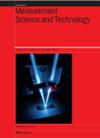改进的交映体几何模式分解和特征选择轴承故障诊断方法
IF 3.4
3区 工程技术
Q1 ENGINEERING, MULTIDISCIPLINARY
引用次数: 0
摘要
提出了一种基于改进的交映体几何模式分解和特征选择的滚动轴承故障诊断方法,以解决由于噪声对早期轴承故障特征的影响而导致的故障识别率低的问题。首先,改进了交映体几何模式分解,以增强其在分解带噪声信号时的鲁棒性,然后提取每个交映体几何分量的时域、频域和时频特征作为特征向量。其次,提出了一种综合特征选择策略,以选择有利于故障分类的最优特征子集。最后,考虑到单一机器学习模型分类精度较低的问题,利用集成学习的 AdaBoost 算法构建了用于故障分类的 AdaBoost-WSO-SVM 模型。对带有噪声的复杂信号进行分解的实验表明,与传统的交映几何模式分解相比,改进的交映几何模式分解更为有效。随后,利用凯斯西储大学(CWRU)和江南大学(JNU)的轴承数据集进行了多次实验。实验结果表明,在 CWRU 数据集上进行综合特征选择和集合学习模式识别实验后,故障诊断的平均准确率可达 99.67%。在 JNU 数据集上,所提出的故障诊断方法的平均准确率达到了 95.03%。这表明,与其他特征选择方法和分类模型相比,本文提出的方法具有更高的准确率和泛化能力。本文章由计算机程序翻译,如有差异,请以英文原文为准。
A bearing fault diagnosis method with improved symplectic geometry mode decomposition and feature selection
A rolling bearing fault diagnosis method based on improved symplectic geometry mode decomposition and feature selection was proposed to solve the problem of low fault identification due to the influence of noise on early bearing fault features. First, the symplectic geometry mode decomposition is improved to enhance its robustness in decomposing signals with noise, then the time domain, frequency domain, and time-frequency features of each symplectic geometric component are extracted as feature vectors. Second, a comprehensive feature selection strategy is proposed to select the optimal subset of features that are conducive to fault classification. Finally, considering the problem of low classification accuracy of a single machine learning model, the AdaBoost-WSO-SVM model is constructed for fault classification using the AdaBoost algorithm of integrated learning. Experimental decomposition of complex signals with noise indicates that the improved symplectic geometry mode decomposition is more effective compared to traditional symplectic geometry mode decomposition. Subsequently, multiple experiments were conducted using the bearing datasets from Case Western Reserve University (CWRU) and Jiangnan University (JNU). The experimental results reveal that, after comprehensive feature selection and ensemble learning pattern recognition experiments on the CWRU dataset, the average accuracy of fault diagnosis can reach 99.67%. On the JNU dataset, the proposed fault diagnosis method achieves an average accuracy of 95.03%. This suggests that, compared to other feature selection methods and classification models, the proposed approach in this paper exhibits higher accuracy and generalization capabilities.
求助全文
通过发布文献求助,成功后即可免费获取论文全文。
去求助
来源期刊

Measurement Science and Technology
工程技术-工程:综合
CiteScore
4.30
自引率
16.70%
发文量
656
审稿时长
4.9 months
期刊介绍:
Measurement Science and Technology publishes articles on new measurement techniques and associated instrumentation. Papers that describe experiments must represent an advance in measurement science or measurement technique rather than the application of established experimental technique. Bearing in mind the multidisciplinary nature of the journal, authors must provide an introduction to their work that makes clear the novelty, significance, broader relevance of their work in a measurement context and relevance to the readership of Measurement Science and Technology. All submitted articles should contain consideration of the uncertainty, precision and/or accuracy of the measurements presented.
Subject coverage includes the theory, practice and application of measurement in physics, chemistry, engineering and the environmental and life sciences from inception to commercial exploitation. Publications in the journal should emphasize the novelty of reported methods, characterize them and demonstrate their performance using examples or applications.
 求助内容:
求助内容: 应助结果提醒方式:
应助结果提醒方式:


